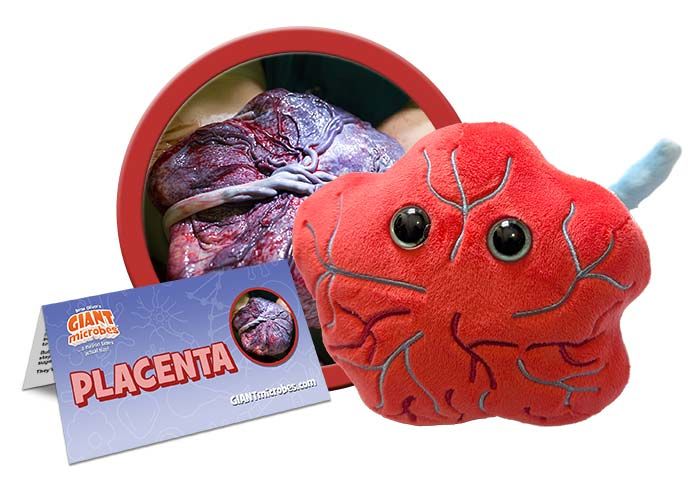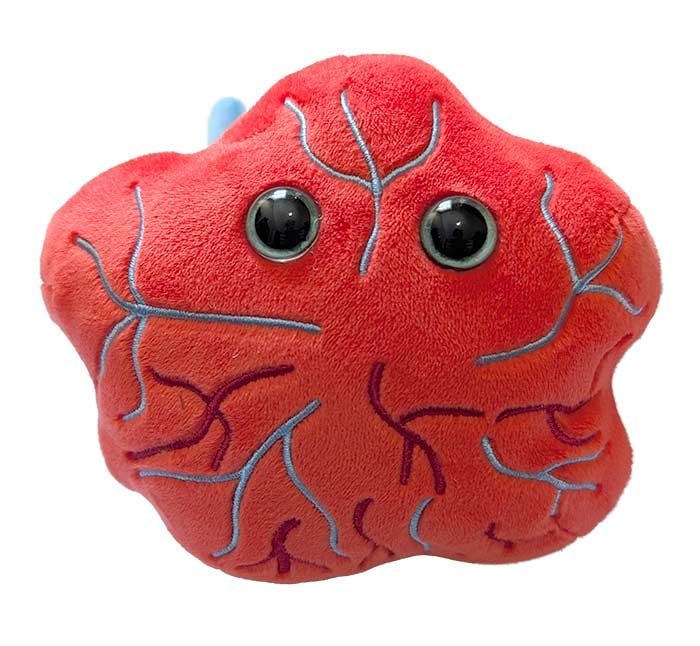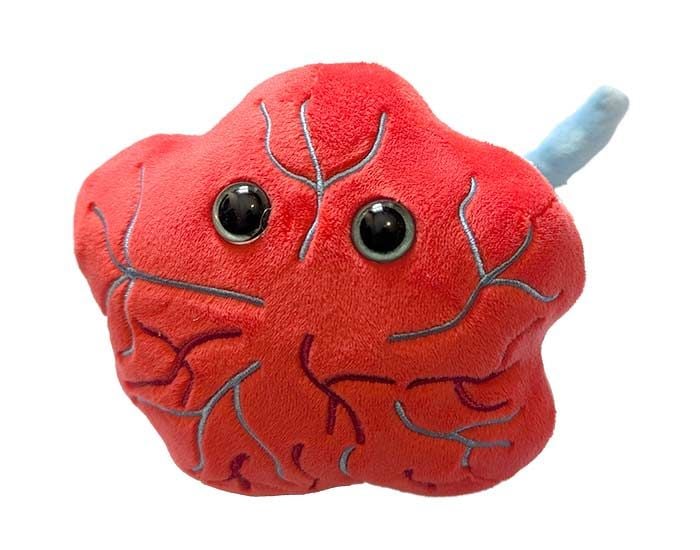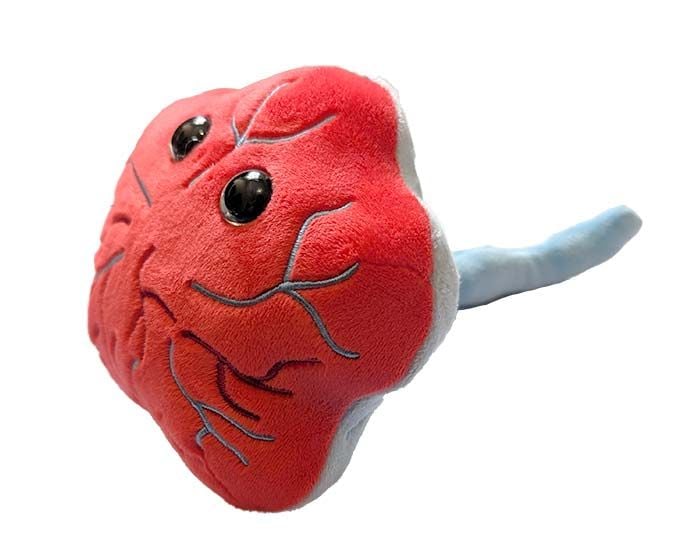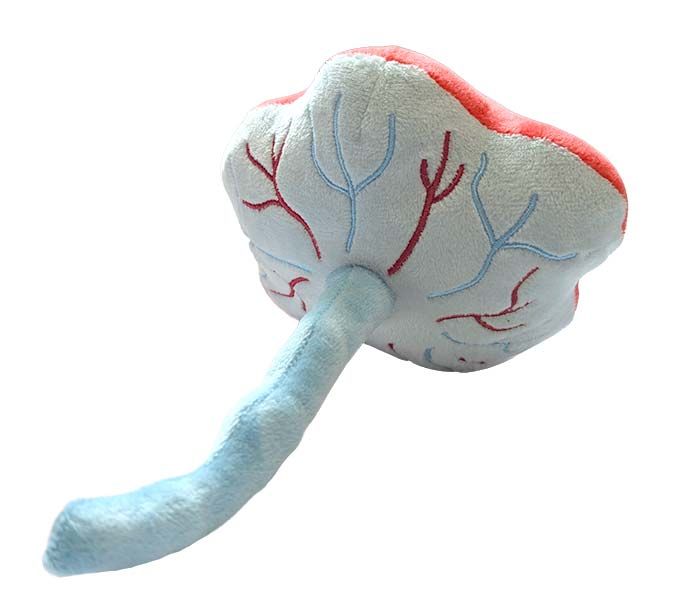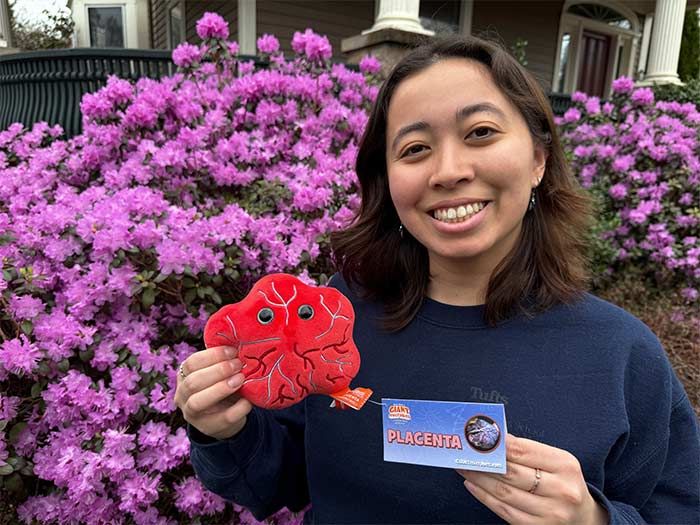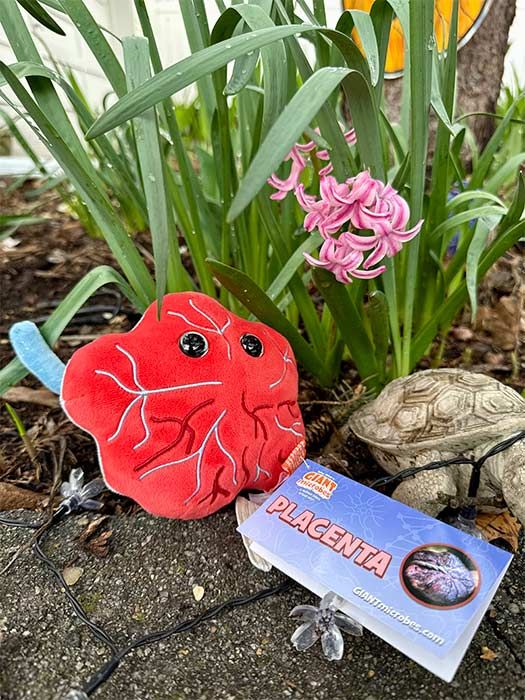Placenta
Introducing GIANTmicrobes Placenta – a scientifically accurate plush inspired by the incredible life-sustaining organ that nourishes and protects during pregnancy! This unique design features two distinct embroidered sides: a vibrant red side representing the maternal surface and a bluish gray side symbolizing the fetal side, both crafted with ultra-soft plush for maximum huggability.
Complete with a bright yellow umbilical cord, this plush makes biology come to life in a fun, tactile way. Whether you're a medical student, educator, parent, or just fascinated by human development, the Placenta plush is a powerful tribute to the unsung hero of prenatal life. Perfect for classrooms, gifts, or anyone who appreciates the science of reproduction.
Product Details
Additional Information
| Sizes | Giantmicrobes are based on actual microbes, cells, organisms and other critters, only 1,000,000 times actual size! Gigantic (GG) 16-24" XL (XL) 10-15" Original (PD) 5-8" Keychain (KC) 2-4" with clip |
|---|---|
| Materials | Plush from all new materials. Stuffed with polyester fiber fill. Surface washable: sponge with water & soap, air dry. |
| Packaging | Each plush microbe includes a printed card with fun, educational and fascinating facts about the actual microbe or cell. |
| Safety | Every product meets or exceeds U.S. and European standards for safety. For ages 3 and up. |
All about Placenta
FACTS: The placenta is the ultimate multitasker and the only temporary organ in the human body! Formed shortly after fertilization, the placenta develops from the same cells as the embryo, growing from a small mass to a full support system during pregnancy. It serves as the baby’s life-support station, supplying nutrients, oxygen, and even antibodies while keeping the mother’s and baby’s blood supplies separate – an impressive bit of biology that sustains new life.
But the placenta is not just a nutrient delivery service. It is also a powerful hormone factory, producing key hormones such as progesterone and estrogen to maintain pregnancy, as well as human chorionic gonadotropin (hCG), which is responsible for a positive pregnancy test. The placenta even releases relaxin, a hormone that helps loosen ligaments and joints, preparing the body for childbirth.
This compact, pancake-shaped organ has a wide-reaching impact. The placenta also serves as a gatekeeper, carefully controlling what passes between mother and baby. It allows nutrients and oxygen through while generally blocking harmful substances. However, this protective barrier is not completely foolproof. Certain medications, environmental toxins, and high-stress levels can still cross it, highlighting the importance of prenatal care and maternal health.
Across cultures, the placenta is revered as a symbol of life and connection. In modern medicine, understanding the placenta has empowered more choices in pregnancy care and maternal health. By valuing the role of the placenta, we recognize the incredible journey that women’s bodies undertake. So the next time you think about pregnancy, give a nod to the placenta – a small yet powerful organ.


